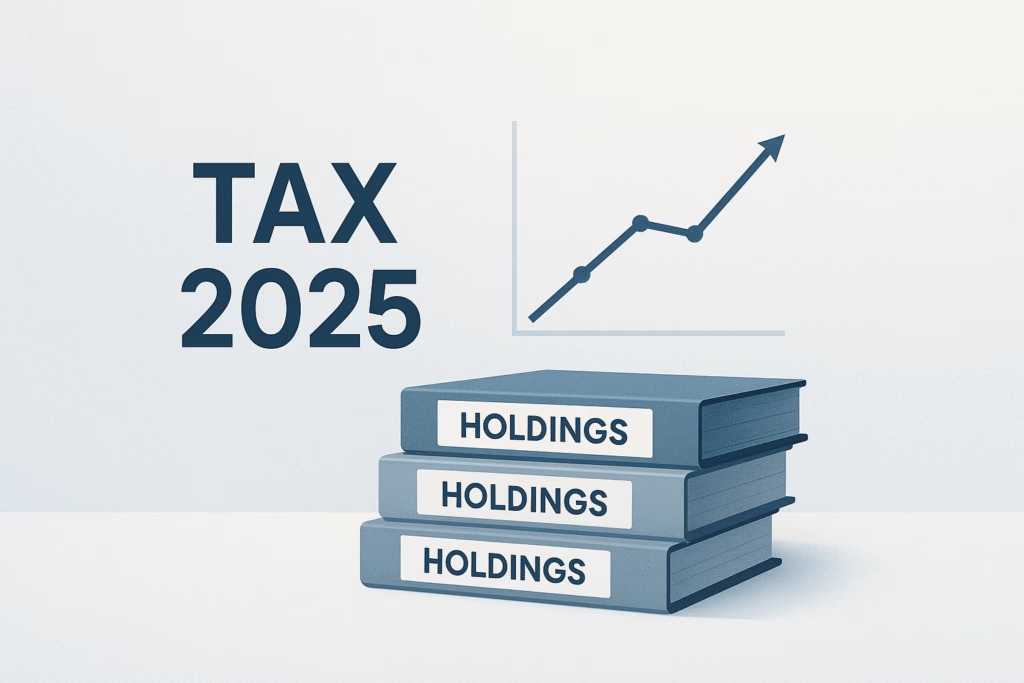The draft 2026 budget about to be unveiled by Sébastien Lecornu includes strong measures designed to "restoring tax fairness".
Among them: a surtax on the profits of large companies and, above all, a tax on asset holding companies, presented as a response to the "financial crisis".tax avoidance strategies"family structures that accumulate profits without distributing them (BFMTV).
Officially, the aim is to make profitable companies and family-owned structures contribute more to the budget effort.
But behind this talk of fairness lies a strong signal: capital and structured assets are once again a prime tax target.
Structural risk for holding companies
If confirmed, this measure could radically redefine the status of patrimonial structures, hitherto regarded as mere "holding shells".
In practice :
- An asset structure, even a modest one, could be subject to additional taxation if its retained earnings are deemed excessive.
- The boundary between asset management structures and taxable "capital-intensive" parent companies risks becoming blurred, opening the door to legal uncertainty.
In other words, the simple act of hoarding in an asset structure could tomorrow be interpreted as a form of tax avoidance.
Possible scenarios
- Partial taxation: additional tax on undistributed income above a certain threshold.
- Tolerance threshold for small holding companies, to avoid a boomerang effect on modest entrepreneurs.
- Deferred or retroactive application, depending on when the 2026 Finance Act comes into force.
The impact on assets
- Dividends held in a holding company will lose some of their appeal if the structure becomes taxed.
- Management must justify the profits retained (reinvestment, projects, internal growth).
- Family transmission structures are likely to be penalized, even though they often serve to stabilize business assets.
Clearly, the paradigmcapitalize today, distribute later"could be called into question.
Consequences for managers of SMEs and family holding companies
Small management holding companies, which are often used to centralize dividends or prepare for business transfers, could become tax-penalized structures if the tax is applied across the board.
Managers should consider :
- a rebalancing between remuneration and dividends,
- or the creation of a holding company abroad within a legal and declared framework (Portugal, United Kingdom, United States).
For self-employed persons working via a SASU or EURL, and who had created a
asset management company to manage their dividends, this development could reduce the scope for optimization.
The trade-offs between hoarding and immediate distribution will have to be reviewed. Individuals using a non-trading company or a passive parent company to manage a portfolio of assets will need to be particularly vigilant.
The tax authorities could reclassify certain structures as abusive optimization vehicles if no real economic activity is demonstrated.
Anticipate before you act
The idea of taxing wealth management companies confirms a major trend: the taxation of capital is once again becoming a political issue. In this context, the best defense remains anticipation: understand the signals, measure your exposure, and structure your assets before the reform.
At WizeCounsel, we have already modeled the possible impacts of this type of taxation in our analysis report on raising the PFU to 36 %.
This document, now reserved for experienced managers and investors, presents several asset and international structuring scenarios that can be applied today.
To obtain the complete confidential memorandum or a personalized tax diagnosis, contact us directly :

